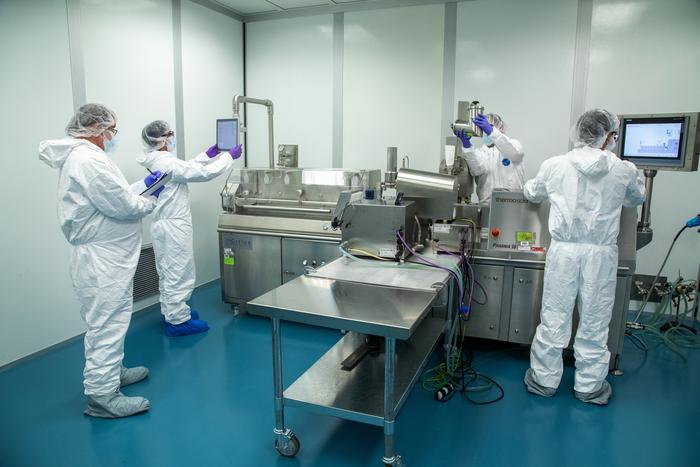In a groundbreaking advancement in the fight against malaria, scientists at Southwest Research Institute (SwRI) have developed innovative bed netting prototypes embedded with potent antimalarial drugs, paving the way for a new class of vector control tools. Collaborating with eminent researchers from the Harvard T.H. Chan School of Public Health and the Oregon Health & Science University (OHSU)/Portland Veterans Affairs Medical Center (PVAMC), the team engineered netting systems designed to deliver Endochin-like Quinolones (ELQs), a novel category of antimalarial compounds, directly targeting Plasmodium parasites within mosquitoes. This development addresses the escalating global challenge posed by resistance to traditional insecticides, elevating hope for halting malaria transmission at the vector level.
Malaria, caused by Plasmodium parasites transmitted by female Anopheles mosquitoes, remains a devastating public health challenge predominantly in tropical and subtropical regions. Despite expansive efforts involving insecticide-treated nets and antimalarial drugs, the World Health Organization reported an alarming 263 million malaria cases and nearly 600,000 deaths in 2023 alone. Compounding this crisis is the growing resistance of mosquitoes to conventional insecticides and larvicides, eroding the efficacy of existing preventive tools. In this context, the novel approach ventured by SwRI seeks to revolutionize vector control by integrating pharmacological interventions directly onto bed nets.
The technical essence of this approach lies in the fabrication of two distinct netting platforms. The first involves coating commercially available polyester nets with an ELQ solution synthesized at OHSU/PVAMC, enabling the nets to exhibit antimalarial properties upon mosquito contact. The second innovative method employs hot-melt extrusion technology, whereby SwRI engineers mixed ELQs into high-density polyethylene filaments. These drug-loaded filaments are amenable to weaving into durable yarns, thus embedding the antimalarial agents throughout the net’s structural matrix. This dual-platform strategy not only enhances the utility of bed nets but also introduces a sustained-release mechanism for continuous parasite suppression.
Hot-melt extrusion, a sophisticated polymer processing technique, plays a pivotal role in embedding the ELQs within polyethylenes. By elevating the polymer above its melting temperature and blending it with the drug formulation under controlled conditions, the process yields filaments with homogeneously dispersed active compounds. This method preserves the chemical integrity and biological activity of ELQs while producing mechanically robust materials suitable for textile manufacturing. Leveraging this technique illustrates the seamless integration of materials engineering with infectious disease pharmacology, underscoring interdisciplinarity in tackling complex biomedical challenges.
Experimental evaluation of these netting prototypes was conducted at Harvard’s Catteruccia lab, where meticulous bioassays determined the efficacy of the ELQ-infused nets in blocking Plasmodium development within mosquitoes. Remarkably, when infectious mosquitoes came into contact with the nets, ELQs were absorbed primarily through their legs, interrupting the parasite’s lifecycle inside the vector. This mode of action not only prevents parasite transmission to humans but also tackles the parasites within the mosquito itself, a cutting-edge approach that intervenes at the source of transmission.
Dr. Michael Rubal, a scientist at SwRI and a key contributor to the study published in Nature, emphasized the transformative potential of integrating antimalarial drugs directly into bed nets. He highlighted that “traditional nets have relied on insecticides, but with emerging resistance, new strategies are imperative.” The pharmacological intervention embedded within netting promises a dual function — repelling and disinfecting mosquitoes — thus reducing the risk of infection more effectively than current interventions.
Utilizing two distinct ELQ compounds further strengthens the strategy by diminishing the risk of parasite resistance. By attacking the parasite at multiple molecular targets within the mosquito, this dual-drug system reduces the evolutionary pressure that often facilitates the emergence of resistant Plasmodium strains. This multidimensional pharmacological approach showcases an advanced understanding of malaria biology and resistance dynamics, signifying a leap towards sustainable malaria control efforts.
Beyond the laboratory, the implications of drug-laden bed nets are immense for communities burdened by malaria, particularly in sub-Saharan Africa and Southeast Asia. Delivering antimalarial drugs through such passive and cost-effective means could dramatically reduce infection rates without necessitating extensive behavioral change or complex logistics. The durability and efficacy of drug-infused netting could increase bed net longevity and protect vulnerable populations, including children and pregnant women, long after initial distribution.
The study also garnered support from a prestigious National Institute of Health R01 grant along with funding from Open Philanthropy, reflecting the high promise and real-world potential of this technology. The cross-disciplinary collaboration, merging chemical engineering, pharmacology, and infectious disease expertise, exemplifies the multifaceted approach needed to tackle global health threats that transcend disciplinary boundaries.
The full research article titled “In vivo screen of Plasmodium targets for mosquito-based malaria control” published in Nature on May 21, 2025, provides comprehensive experimental data underscoring the effectiveness of ELQ-loaded nets. The rigorous experimental studies demonstrated the suppression of parasite development within live mosquitoes, validating this strategy’s feasibility for scalable malaria prevention.
This breakthrough underscores a paradigm shift in malaria control — moving from merely targeting mosquitoes to nullifying the parasites they harbor through intelligent drug delivery systems embedded within everyday protective gear. As malaria continues to claim lives annually, innovations like ELQ-infused nets offer a beacon of hope, harnessing cutting-edge science to outpace disease transmission and resistance.
Future research will likely explore field trials to assess the nets’ real-world durability, efficacy, and safety, as well as investigate potential synergies with existing vector control measures. The integration of drug delivery with conventional insecticidal treatments heralds a new frontier in public health, promising to reshape malaria prevention strategies globally.
Subject of Research: Not applicable
Article Title: In vivo screen of Plasmodium targets for mosquito-based malaria control
News Publication Date: 21-May-2025
Web References:
https://www.nature.com/articles/s41586-025-09039-2
https://www.swri.org/markets/chemistry-materials/chemistry-chemical-engineering/microencapsulation/extrusion
References:
Rubal, M., Catteruccia, F., Riscoe, M., et al. (2025). In vivo screen of Plasmodium targets for mosquito-based malaria control. Nature. doi:10.1038/s41586-025-09039-2
Image Credits: Southwest Research Institute
Keywords: Malaria, Plasmodium infections, Insecticide resistance, Drug research




